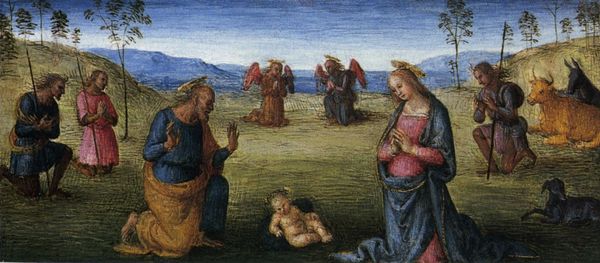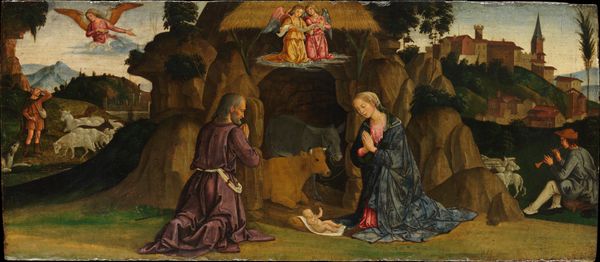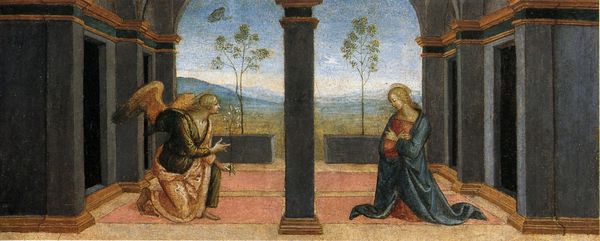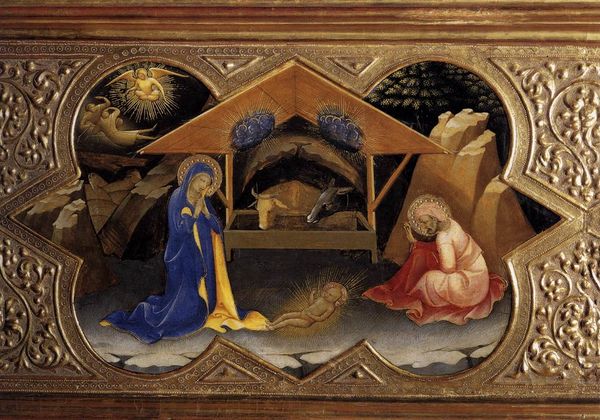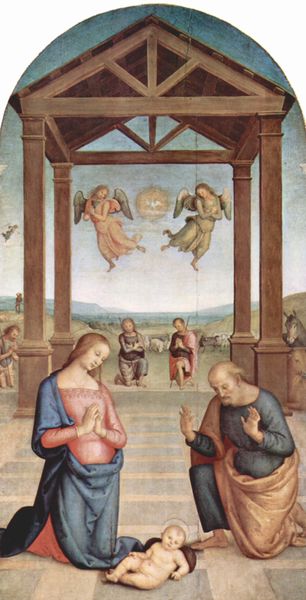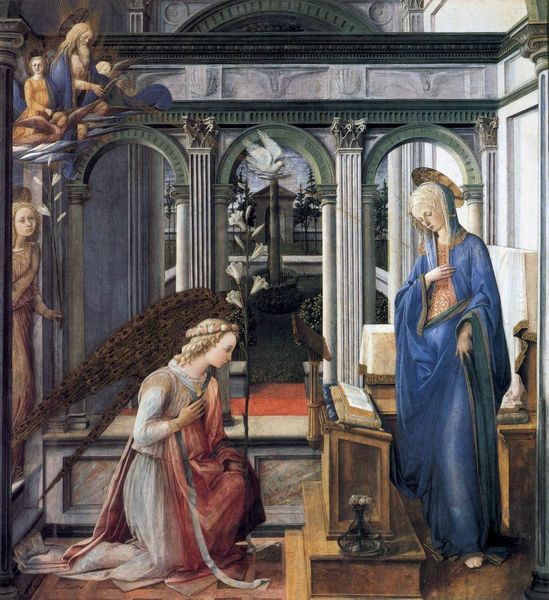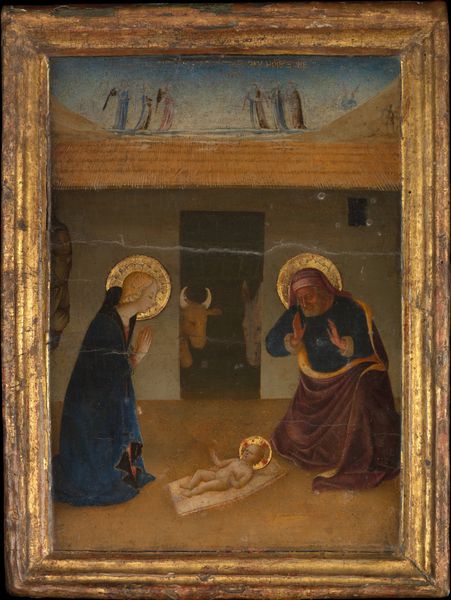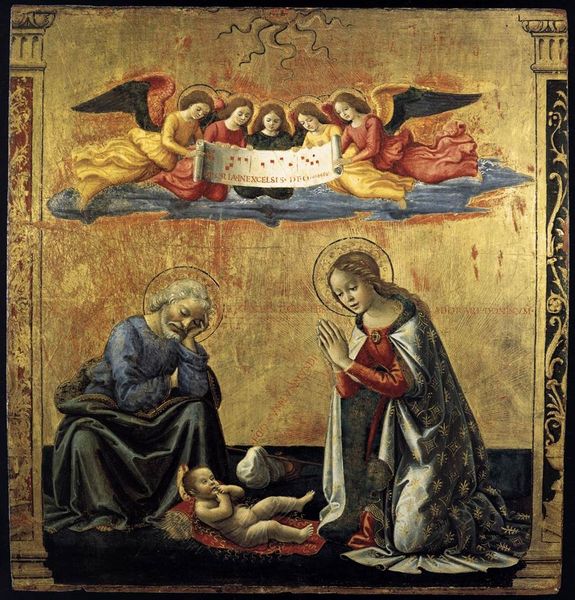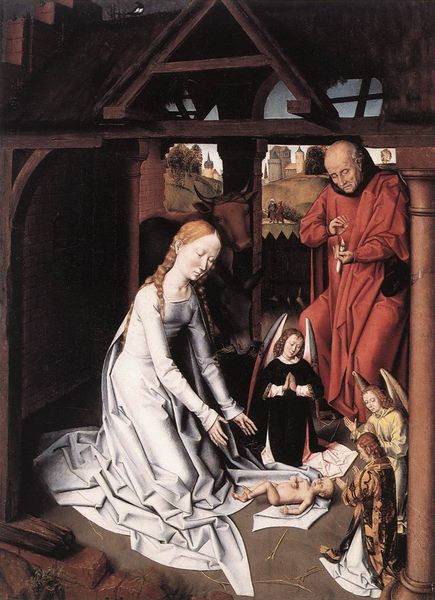
painting, oil-paint
#
portrait
#
high-renaissance
#
narrative-art
#
painting
#
oil-paint
#
sculpture
#
landscape
#
figuration
#
oil painting
#
christianity
#
genre-painting
#
history-painting
#
italian-renaissance
#
christ
Copyright: Public domain
Curator: Here we have Pietro Perugino's “Pala di Corciano (Nativity),” painted in 1513, an oil on panel. Editor: The muted colors lend this altarpiece a hushed and dreamlike quality. Despite depicting a significant moment in Christian history, the scale feels intimate. Curator: Yes, observe how Perugino uses composition to direct our gaze. The figures, arranged symmetrically, frame the central vanishing point in the distant landscape. It's all about balance. The gaze rests peacefully within the central shelter and along the planar field of the calm figures, both human and animal, at rest. Editor: The formal balance is undeniable, yet the symbolism hints at underlying power dynamics. Who is included and who is left out? We must consider the positioning of Mary and the Christ child and who this inclusion served, namely, the upper classes of the time. The shepherds on the left are, of course, kneeling as would be expected given class structures of the day, emphasizing their lower status in relation to the Holy family. Curator: Perugino was a master of creating harmonious spaces. The linear perspective creates a sense of depth and the interplay of light and shadow gives form to the figures. Editor: What strikes me most is not the visual harmony, but the stark lack of female figures other than Mary. Where is the space for the voices and experiences of women in this historical narrative? It reveals so much about the construction of power. Curator: But aren't we drawn into this devotional space through its ideal proportions and ordered structure? Perugino’s technical skill allows for spiritual contemplation. Editor: Or perhaps we can see it as a reminder of whose stories are prioritized. To truly contemplate, we need to question what's *not* shown as much as what is. Whose version of the story is this? Curator: I concede that these works allow us entry into Renaissance values. The visual symmetry provides viewers of the day with assurance of established hierarchies. Editor: Well, engaging with Renaissance works through a contemporary lens provides valuable lessons to our world today, including reminders of structural and societal limitations on cultural progress.
Comments
No comments
Be the first to comment and join the conversation on the ultimate creative platform.
